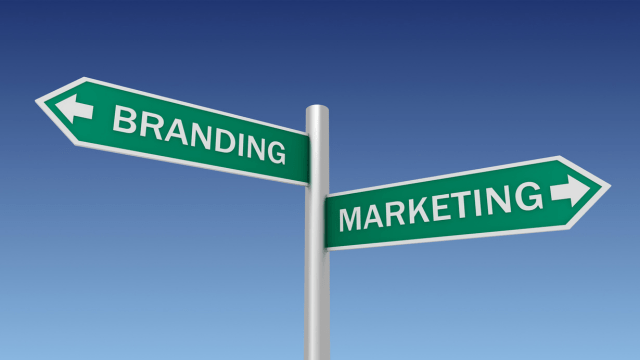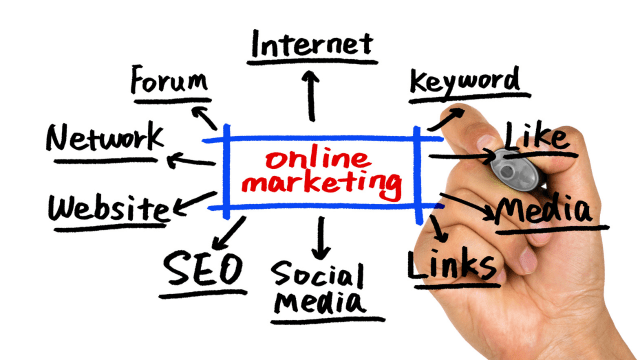
Branding and marketing are often used interchangeably but each serves different purposes in business growth. If you’ve ever wondered why some businesses build strong, lasting connections with their audience while others struggle despite aggressive marketing efforts, the answer often lies in understanding the balance between branding and marketing.
Branding is who you are, while marketing is how you attract attention. Branding defines your identity, values, and emotional connection with your audience. Marketing, on the other hand, is the strategy you use to communicate and promote your brand.
In this article, we’ll break down the key differences between branding and marketing, how they work together, and which one your business should prioritize to build long-term success.
In this article, we’ll break down the key differences between branding and marketing, how they work together, and which one your business should prioritize to build long-term success.
What is Branding?

Branding is the process of creating a unique identity for your business that influences how people perceive and connect with it. It’s not just about a logo or design, it’s the combination of your business’s visual identity, messaging, values, and customer experience that sets you apart.
Branding involves:
- Brand Identity: Your logo, colours, typography, and visual elements that make your business recognizable.
- Brand Voice & Messaging: The tone and language you use to communicate with your audience.
- Brand Values & Mission: What your business stands for and the purpose behind it.
- Customer Experience: How people feel when they interact with your brand, from website navigation to customer service.
For example, Apple’s branding isn’t just about sleek product design. It’s about innovation, simplicity, and a premium customer experience. This consistency is what makes Apple stand out, even before marketing comes into play.
Why Branding Matters
A strong brand differentiates you from competitors and helps build a lasting impression. According to a Lucidpress study (registration required), consistent branding can increase revenue by up to 23% because customers recognize and trust businesses that maintain a cohesive brand identity.
What is Marketing?

Marketing is the process of promoting and selling products or services to your target audience. It involves strategies and techniques designed to attract, engage, and convert potential customers. A strong marketing strategy ensures your business reaches the right people at the right time, increasing brand awareness and driving sales.
The Core Elements of Marketing
Marketing includes several activities that work together to achieve business growth. These include:
- Market Research: Understanding customer needs, industry trends, and competitor strategies.
- Advertising & Promotion: Using online and offline channels to create awareness (e.g., social media, email marketing, paid ads).
- Content Marketing: Providing valuable information to educate and engage potential customers.
- SEO & Digital Marketing: Optimizing content for search engines and leveraging digital tools for targeted outreach.
- Sales Strategies: Converting prospects into paying customers through direct communication and engagement.
The Role of Marketing in Business Growth
An effective marketing strategy helps businesses:
- Increase brand visibility – Get noticed by the right audience.
- Generate leads and conversions – Turn prospects into loyal customers.
- Stay competitive – Adapt to market trends and consumer behaviour.
For instance, companies like Coca-Cola and Nike use powerful marketing campaigns to maintain global recognition. They combine storytelling, influencer partnerships, and digital marketing to stay relevant.
Branding vs. Marketing
While marketing focuses on promoting products or services, branding defines the business identity behind those promotions. Without branding, marketing messages may lack consistency, and without marketing, a brand may struggle to gain visibility.
According to Forbes, businesses with strong marketing strategies experience faster customer acquisition and higher revenue growth.
The Difference Between Branding and Marketing
While marketing is how you attract and convert customers, branding is why they choose you over competitors. Without branding, marketing is just noise; without marketing, branding remains unseen.
1. Branding Creates Identity, Marketing Drives Visibility
Branding defines your business’s core identity, shaping how people perceive and connect with you. It answers key questions:
- What do you stand for?
- How do you want customers to feel when they interact with your brand?
- What makes you different from competitors?
Marketing, on the other hand, amplifies that identity by using strategies to reach, attract, and engage the right audience. A great marketing campaign might bring people to your brand, but branding is what keeps them coming back.
Example: Apple’s branding emphasizes innovation, simplicity, and exclusivity. Their marketing (ads, product launches, and social media) reflects this, but it’s their brand identity that creates customer loyalty.
2. Branding Is Long-Term, Marketing Is Short-Term
Branding is an ongoing process that builds emotional connections over time, while marketing is a tactical effort aimed at driving immediate results.
- Branding lasts forever – Once established, it remains consistent even when marketing campaigns change.
- Marketing evolves – Strategies shift depending on trends, platforms, and audience behaviour.
Example: Nike’s “Just Do It” slogan has been part of its branding for decades, while their marketing tactics such as influencer collaborations or new product ads change frequently.
3. Branding Builds Loyalty, Marketing Generates Sales
Marketing is transactional, designed to create awareness and drive conversions. Branding is relational, focusing on customer loyalty and emotional engagement.
- Marketing attracts new customers.
- Branding turns them into lifelong advocates.
A company that only focuses on marketing may see short-term sales but struggle with retention. A strong brand creates trust, making it easier for marketing efforts to convert leads into customers.
Example: Starbucks doesn’t just sell coffee, it sells an experience. Their marketing campaigns promote seasonal drinks and promotions, but their brand identity (cosy atmosphere, premium quality, and customer connection) keeps people coming back.
4. Branding Defines Your Message, Marketing Delivers It
Branding shapes the tone, messaging, and voice of your business, ensuring all marketing efforts align with your values. Without a strong brand, marketing can feel inconsistent or ineffective.
- Branding ensures consistency – Every marketing campaign should reflect the brand’s personality.
- Marketing amplifies the brand’s story – The right strategies bring that message to life through content, ads, and engagement.
Example: Tesla’s branding revolves around sustainability and cutting-edge technology. Their marketing whether through Elon Musk’s social media or product launches reinforces that core message.
5. Branding Is Emotional, Marketing Is Tactical
People don’t just buy products; they buy stories, emotions, and values. Branding taps into this emotional connection, while marketing provides the strategy to get in front of the right audience.
- A great marketing strategy brings attention.
- A powerful brand creates emotional loyalty.
Example: Coca-Cola’s branding is built around happiness and togetherness. Their marketing campaigns especially during the holidays capitalize on these emotions to strengthen the connection with customers.
Branding + Marketing: The Perfect Balance
Neither branding nor marketing can work in isolation. A business that focuses only on branding might struggle to reach new customers, while one that focuses only on marketing risks inconsistency and lack of trust.
- For lasting business growth, you need:
- A strong brand identity – Defines your values, mission, and personality.
- A solid marketing strategy – Uses branding to guide campaigns and outreach.
In short: Branding makes marketing more effective, and marketing brings branding to life.
Common Mistakes Businesses Make with Branding and Marketing
Even with the best intentions, businesses often fall into traps that weaken their branding and marketing efforts. Here are some common mistakes to avoid:
1. Treating Branding and Marketing as the Same Thing
Many businesses believe branding and marketing are interchangeable. This leads to campaigns that focus only on promotions, neglecting the deeper emotional connection that branding builds.
Solution: Understand that branding defines your identity, while marketing communicates it. Invest time in crafting your brand’s personality, values, and voice before launching marketing campaigns.
2. Prioritizing Marketing Without Establishing a Strong Brand
Jumping straight into marketing without a clear brand identity can confuse your audience. If your messaging, visuals, or tone keep changing, it’s difficult for customers to connect with you.
Solution: Build a clear brand foundation first – define your mission, values, and audience. This ensures all marketing efforts feel intentional and consistent.
3. Creating a Great Brand But Neglecting Marketing
On the flip side, some businesses spend too much time refining their brand but fail to promote it effectively. No matter how strong your branding is, without strategic marketing, your business may go unnoticed.
Solution: Balance is key. Once your brand identity is established, use marketing strategies like content marketing, social media campaigns, and SEO to reach your target audience.
4. Overlooking Consistency
Inconsistent messaging, visuals, or tone across platforms weakens your brand’s impact. If your website, social media, and email campaigns don’t align, it creates confusion and reduces trust.
Solution: Develop clear brand guidelines that cover logo usage, colour schemes, tone of voice, and messaging style. This ensures your brand feels cohesive across all touchpoints.
5. Ignoring the Power of Storytelling
Relying solely on promotions and product features without sharing your brand’s story can make your marketing feel cold and transactional. Customers connect with brands that evoke emotions and align with their values.
Solution: Incorporate storytelling into your content. Share your brand’s journey, highlight customer success stories, or showcase the people behind your business.
6. Focusing Only on Short-Term Results
Businesses that chase quick wins often neglect long-term brand-building efforts. While aggressive promotions may boost sales temporarily, they won’t create lasting customer loyalty.
Solution: Combine short-term marketing tactics with long-term brand-building strategies. Focus on creating meaningful connections with your audience through consistent engagement.
7. Neglecting Data and Insights
Relying on guesswork instead of data can lead to marketing efforts that miss the mark. Without insights, you risk wasting resources on campaigns that don’t align with customer needs.
Solution: Use analytics tools to track customer behaviour, measure campaign performance, and identify trends. This data helps you refine both your branding and marketing strategies for better results.
Balance and Strategy
Effective branding and marketing require balance. While branding shapes your identity, marketing ensures that your identity reaches and resonates with your audience. By avoiding these common mistakes and combining both elements strategically, you create a powerful presence that drives growth and builds customer loyalty.
How Branding and Marketing Work Together
Branding and marketing are not separate entities, they complement each other. Without branding, marketing has no foundation. Without marketing, branding has no visibility. Here’s how they work together:
- Branding defines who you are, marketing amplifies your message. Your brand identity (logo, voice, mission) sets the stage, while marketing strategies communicate that identity to the world.
- Marketing attracts customers, branding retains them. Marketing campaigns bring attention to your business, but a strong brand ensures customers stay loyal.
- Consistency across both builds trust. If your branding is clear and your marketing aligns with it, customers will recognize and trust your business faster.
A strong brand makes marketing efforts more effective, and well-executed marketing reinforces brand identity. You need both for long-term success.
Which One Should You Prioritize?
Branding should come first, but marketing should follow closely behind. Here’s why:
- Branding is the foundation. Before launching marketing campaigns, you need a clear identity; what your business stands for, your target audience, and your messaging. Without this, marketing efforts can feel scattered.
- Marketing brings your brand to life. Once your brand identity is in place, marketing spreads the word and attracts the right audience through strategies like content marketing, social media, and advertising.
The best approach is to build your brand first, and then market it consistently. However, branding isn’t a one-time effort. Your brand evolves as you market and engage with your audience. The key is to maintain a balance between both.
At Clarylife Global, we understand that great branding fuels powerful marketing. We help businesses craft clear, memorable identities and implement marketing strategies that truly connect with their audience.
